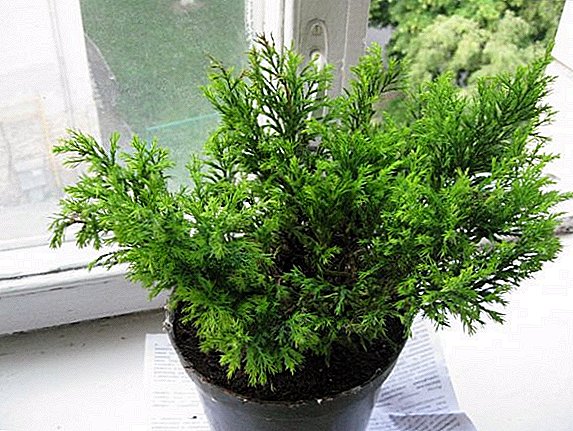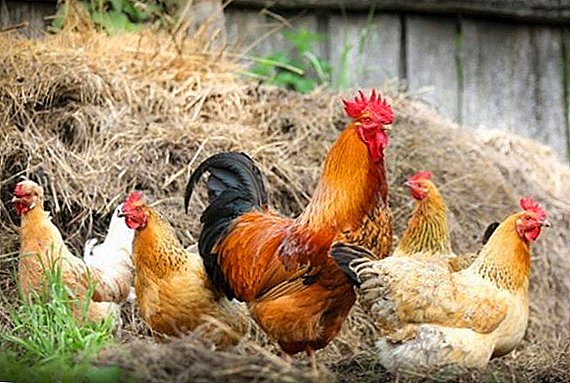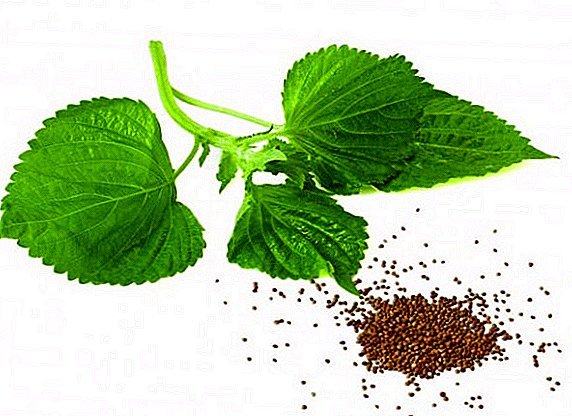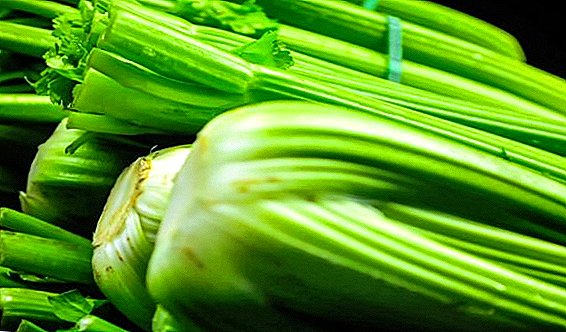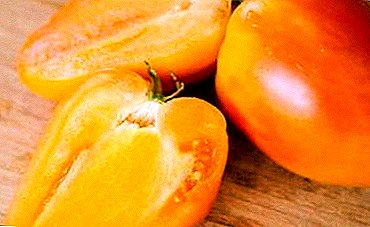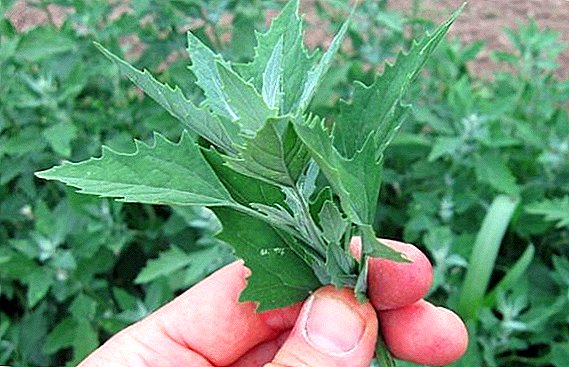 This one-year weed is well known to all, as it is found everywhere. Some housewives are with him intensive struggle in the beds, others are added as an ingredient in food, and still others are used as a therapeutic agent for various diseases. But the healing power of the plant today is recognized only by folk healers, official medicine still remains aloof. Let's try to analyze what useful properties and contraindications are characterized by a quinoa, which is more from it - benefit or harm.
This one-year weed is well known to all, as it is found everywhere. Some housewives are with him intensive struggle in the beds, others are added as an ingredient in food, and still others are used as a therapeutic agent for various diseases. But the healing power of the plant today is recognized only by folk healers, official medicine still remains aloof. Let's try to analyze what useful properties and contraindications are characterized by a quinoa, which is more from it - benefit or harm.
Mar white
In the scientific literature, the usual annoying weed is referred to as white mary or common mary (Chenopódium álbum). Botanists classify it to the genus of the same name from the Amaranth family.
Did you know? Weed spreads very quickly. Each year, about one hundred thousand seeds spill from one peduncle, which can adapt to survival even in the harsh conditions of the Arctic. In addition, once in the substrate, they can wait for a long time for favorable circumstances for their growth.Outwardly, it is a strongly branched plant with a powerful, very deep rhizome, a straight stem that grows to a height of two meters, and ovoid light green leaves. Their edges are outlined by dull teeth, and the inner and back sides are covered with a mealy patina.
Only young foliage is suitable for use. It is used during the flowering of weed. Small spike-shaped inflorescences up to 40 cm long quinoa throws out in the second decade of July. By the autumn of them ripen tiny black grains of a round shape.
Weeds can bring not only harm, but also benefit. Learn about the beneficial properties of milkweed, dodder, ambrosia, sow thistle, mouse peas, arrowroot thrown back, milk thistle, bruise.
 To find plants, no need to go far. It is enough to look around you within your yard: on the beds, near the outbuildings, the compost or manure, on the roadsides.
To find plants, no need to go far. It is enough to look around you within your yard: on the beds, near the outbuildings, the compost or manure, on the roadsides.
Plant composition
Although scientific medicine rejects the healing effect of quinoa, its unique chemical composition has been proven in the laboratory.
Important! Uncontrolled eating white mardy can lead to dramatic weight loss. This is due to the intensive elimination of nitrogen from the body, which is fraught with loss of health (the digestive organs and the central nervous system are primarily affected).Plant rich:
- essential oils;
- vitamins A, E and C;
- proteins;
- organic acids (ferulic, vinylinic, phenolcarboxylic);
- alkaloids;
- betaine;
- trigonelline;
- fatty oil (found only in the grains of quinoa);
- saponins;
- flavonoids;
- henopodine
Beneficial features
According to herbalists, white marsh is endowed with unique healing properties. That is why its stems, foliage and inflorescences are widely used for the preparation of various decoctions, infusions and ordinary teas.  This medicine is recommended by folk healers to treat cough, bronchitis, tuberculosis, gastritis, ulcers in the gastrointestinal tract, digestive disorders, migraines, neurasthenia, nervous stresses (including those with paralysis and convulsions). Also, the potion relieves inflammation, alleviate pain, expel worms. Sometimes it is prescribed as a diuretic for liver diseases.
This medicine is recommended by folk healers to treat cough, bronchitis, tuberculosis, gastritis, ulcers in the gastrointestinal tract, digestive disorders, migraines, neurasthenia, nervous stresses (including those with paralysis and convulsions). Also, the potion relieves inflammation, alleviate pain, expel worms. Sometimes it is prescribed as a diuretic for liver diseases.
In folk medicine, the healing properties of quinoa are successfully used for calluses, radiculitis, rheumatism, mosquito bites. In such cases, the herb is recommended to prepare a special ointment for external use.
Did you know? In industry, weed raw materials are used to make purple dye.Juice from fresh shoots rescue victims from sunstroke, and powder from dry ground raw materials is used as an alternative to talc baby powder. Ashes of grass practice the removal of warts and moles.

Application
The curative properties of the weed grass of the quinoa were appreciated not only by the traditional healers, but also by the cook, the beauties and the ordinary mistresses. The plant, although it is considered unnecessary vegetation, but in many spheres of human activity plays a significant role. We will understand in more detail where and how you can apply white mar.
In folk medicine
In folk recipes, the raw material of this plant is very common. From it prepare ointments, decoctions, infusions. For example, for dysfunctions of the digestive tract, it is recommended to take 1 tablespoon of quinoa decoction three times a day. It is made from 4 tablespoons of chopped dry grass and 200 g of boiling water. All components are combined and incubated for about 15 minutes over low heat. Then let the potion cool to room temperature and drain it. Prepared drug is also recommended to wipe purulent wounds, to treat boils and fungal diseases of the legs. 
Did you know? The healing properties of quinoa first discovered Hippocrates. He recommended this plant to treat cough, various hoarseness (especially when sputum is poorly separated), rickets, constipation and diseases of the gastrointestinal tract.From the young leaves and inflorescences of quinoa, herbalists advise to brew tea. He especially helps with colds and malfunction of the gallbladder. Daily you can drink no more than 1 cup of the drug. But, given the laxative effects of the grass, limit one-time techniques to 30 g.
To establish the work of the gastrointestinal tract, vitamin salads are prepared from grated carrots, young quinoa and dill leaves. All the ingredients are salted and dressed with sour cream. For spice, you can add chopped cloves of garlic.
Some herbalists practice cleansing the body of toxins with the help of Mari. For this, a tablespoon of finely chopped fresh raw materials is poured with a glass of boiling water and drawn for 3 hours. Then strain and drink three times a day before meals. The same tool is recommended to treat headaches, rinse your mouth with stomatitis and make compresses with rheumatism.
Tofetan lofant, lagenaria, spinach, broccoli, amaranth, horseradish, Chinese cabbage, cumin, nectarine, plum, tomatoes will help remove toxins and toxins from the body.
 For outdoor use quinoa, recommended ointment. They are made from chopped herbs, any animal fat, and honey. All components when combined should give a homogeneous pasty mixture.
For outdoor use quinoa, recommended ointment. They are made from chopped herbs, any animal fat, and honey. All components when combined should give a homogeneous pasty mixture.
Did you know? Official Oriental medicine uses quinoa as a hemostatic agent.
In cosmetology
Even the ancient Slavs used the herb to rejuvenate the skin of the face and give it a healthy glow. To get such an effect, it is enough to pick just a few sprigs of quinoa and dry them. Then the raw material should be finely chopped to get 1 tablespoon of a hill, and pour a glass of boiling water. After half an hour, the resulting infusion can be filtered, after which you need to add 30 g of milk to it.  In this liquid, the cloth is moistened and applied to the face for 15-20 minutes. After the specified time, the mask is washed off with cold water. Some ladies recommend strengthening the anti-aging effect of rubbing the skin with ice cubes. If you repeat the procedure at least 3 times a week, your face will soon shine with health and beauty.
In this liquid, the cloth is moistened and applied to the face for 15-20 minutes. After the specified time, the mask is washed off with cold water. Some ladies recommend strengthening the anti-aging effect of rubbing the skin with ice cubes. If you repeat the procedure at least 3 times a week, your face will soon shine with health and beauty.
In cooking
Grass quinoa today confidently entered the kitchen of many housewives, sometimes dishes from it can be tasted even in places of public catering. Young shoots are used as an ingredient for salads, okroshka, cabbage soup, soups, meatballs, cereals and meat sauce. 
Important! In the food they use only the stems and foliage, which are broken in the spring, before flowering.Anything can be made from white mari. Here improvisation and fantasy have no limits. If you have not tried these masterpieces, we suggest you start with french fries. For its preparation will need:
- a bunch of washed quinoa;
- 400 g boiled potatoes;
- salt, pepper - to taste;
- 1 egg;
- green basil (if desired, you can take paprika, ginger, dill and other spices).
 Do not forget to cover the bottom of the bowl, where you will lay out crispy cubes, with a napkin. This is to ensure that the dish has lost excess fat. Alternatively, temporarily place potatoes on a wire rack.
Do not forget to cover the bottom of the bowl, where you will lay out crispy cubes, with a napkin. This is to ensure that the dish has lost excess fat. Alternatively, temporarily place potatoes on a wire rack.Important! Herbalists warn that the seeds of white Mari are very heavy for the human digestive organs. Due to their poor digestibility, they are recommended to be used in small doses or replaced with young leaves and shoots.
In the household
Sometime during the difficult war years, this grass was massively collected in order to grind it into flour. They made bread from it and made cakes. But with the advent of more nutritious foods, this tradition has faded into oblivion.
The plant is now perceived by many as an annoying weed. Moreover, to the best of his development, he is so rooted that it is almost impossible to pull him out of the ground. Without the help of spade-bayonet here is not enough. Young plants are fed to pigs, and semi-woody specimens are removed completely so that the weed is not planted.
Contraindications
Mar ordinary is not a harmless spice or habitual for us greens. If you consume it regularly as food, you can get serious health complications. That is why this ingredient can only occasionally appear in your kitchen. And if you suffer from diseases of the urinary or gallbladder, then you should stop using culinary and medical experiments with this herb.  Also, quinoa is dangerous in chronic diseases of the digestive tract, impaired blood coagulation, formed stones in the kidneys and gall bladder.
Also, quinoa is dangerous in chronic diseases of the digestive tract, impaired blood coagulation, formed stones in the kidneys and gall bladder.
Important! Harvest raw Marie white need to inflorescences. The grass is dried in the attic, away from sunlight, and then stored in paper bags no more than a year.Quinoa in many parts of the world, especially in Asia, is considered a useful plant that can be used for health, beauty, and as a culinary component. Of course, it is not desirable to plant weed thickets in the garden, because more than anything on it will not grow. A few stalks of Mari in the yard will not interfere. The main thing is to consume them wisely, and in the case of herbal medicine you should consult with your doctor.




